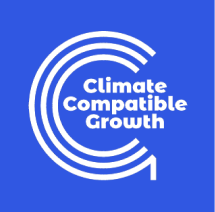CCG is a strong believer in the development of open-source modelling tools that aim to address a range of issues in the transition towards more sustainable futures. Part of the value of these tools lies in their ability to work together in novel and insightful ways to address the specific needs of a country. To this end, CCG is in the exciting stage of launching four new models and tools that focus on the financing of these transitions; here Will Collier explains more and introduces FinTrack.

The reason CCG has expanded its portfolio of finance-orientated tools is to improve understanding of the relationship between the costs of constructing sustainable infrastructure and the cost of financing these development plans. These now include the Model for Informed National Financing or MINFin, developed by CCG’s Hannah Luscombe from the University of Oxford; the IAEA’s Model for Financial Analysis of Electric Sector Expansion Plans – FINPLAN, the Financing Costs for Renewables Estimator- FinCoRE (built by Luke Hatton) and the Climate Finance Tracker – FinTrack–which I developed.
As many countries look to scale up climate action and sustainable development, it is essential to ensure that financing is both available and affordable, if a country is to secure a financially sustainable and just transition. Ensuring that countries maximise the use of highly concessional sources of financing (funds that carry lower interest rates and longer loan terms, requiring lower repayment) is key to ensuring that these transitions are possible. With climate funds spread across numerous institutions and implementing agencies, each with their own eligibility criteria, funding methods, and strategic focus, navigating this space can be daunting, and this complexity can often lead to the under-utilisation of available resources, misalignment with national priorities, or funds that are missed from country use altogether.
FinTrack is designed to help governments and development partners to understand the landscape of Climate and Development financing available to address these climate needs within countries. FinTrack provides a clear view of what’s on the table: from historical financing flows to potential future allocations, typical financing terms, and how accessible each fund actually is in practice.
How does FinTrack Work?
Targeted at public financing of climate-related projects, FinTrack aims to simplify this complexity and bring clarity to the conversation around climate finance. It does this by taking data published by more than 30 of the key Climate Funds and Development Fund commitments to climate finance and using these databases to build a profile of climate finance use over a historic period.
FinTrack uses allocation frameworks outlined by Climate Funds and Multilateral Development Banks to estimate the concessional climate finance that may be allocated to each country over a period of time, based on commitments to the fund and eligibility. This is used in conjunction with available data on the standard terms of financing offered by each fund to countries in their portfolio to give a metric of the relative concessionality of each of these volumes of finance.
Lastly, FinTrack maps each fund’s specific criteria to 12 universal standards, making it easier to compare funds and assess the accessibility or barriers countries may experience when seeking to unlock these resources for financing their sustainable transition.
How can FinTrack be used?
FinTrack aims to answer several key questions that stakeholders should ask when considering climate finance and sustainable development strategies:
Are we tapping into the climate and development funds we’re eligible for?
By comparing historic use with potential allocations from each fund, users are able to highlight larger volumes of concessional finance that may have been under-used before but may help to close financing gaps in their strategies in future.
How favourable are the terms—Are we taking on the most concessional debt?
FinTrack allows users to rank funds based on a range of criteria, most notably the concessionality of funds, whether that is the interest rate, loan terms, or the over-all grant element of the funds (a single metric for concessionality compared to market rates). This can help stakeholders to move away from reliance on less concessional funds and prioritise implementing changes to unlock more finance with favourable terms.
Where are the biggest accessibility hurdles, and how can we overcome them?
To help highlight barriers to securing this concessional finance, and policy reforms that may address these barriers, FinTrack maps the criteria for each fund onto 12 universal criteria. This allows for more comprehensive understanding and comparisons between funds with regard to how to get these funds and where countries are falling short on meeting criteria that could unlock large amounts of concessional climate funds.
What does this all lead to?
While FinTrack can be used as a stand-alone tool, it can also be used in conjunction with several other models within CCG’s portfolio. Most notably, FinTrack has recently been used in Zambia to support the development of a financing strategy for the country’s Integrated Resource Plan (IRP). FinTrack has been used:
- As a limit for the drawdown of concessional finance available to meet financing need within the energy sector based on Zambia’s eligibility for certain climate and development funds.
- To assess the weighted average cost of capital (WACC) that may be experienced within this pool of concessional finance.
These key outputs from FinTrack have been used alongside an optimisation model to assess how best to allocate this concessional finance across technologies and potential projects, aiming to maximise the sector’s overall financeability. Using FinTrack, realistic maximum limits were set on what the sector can expect to receive from concessional climate funds, and how the lower cost of capital associated with these funds can impact the rates of return and viability of each project.
FinTrack can also be used with CCG’s MINFin, and the IAEA’s FINPLAN models to set bounds and expectations on the volumes and terms of concessional finance for projects at the sectoral or project level respectively.
Overall, FinTrack aims to empower stakeholders to take a more strategic, data-driven approach to financing the climate transition – leaving no funding unused.
How do I get FinTrack?
FinTrack is an open-source tool available to be downloaded for free by anyone. It is available as part of CCG’s wider suite of climate finance-oriented tools for download via Zenodo and is supported within CCG’s free online course hosted by the Open University on OpenLearn that covers FinTrack and several other key financial tools.
Download the tool: https://zenodo.org/records/14872116
Download the course: https://www.open.edu/openlearncreate/course/view.php?id=14218
